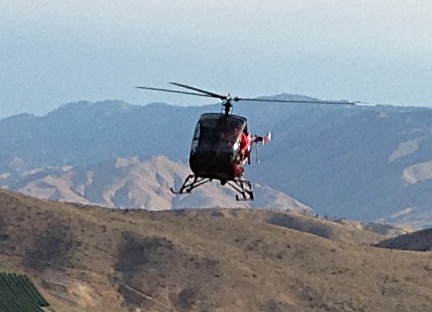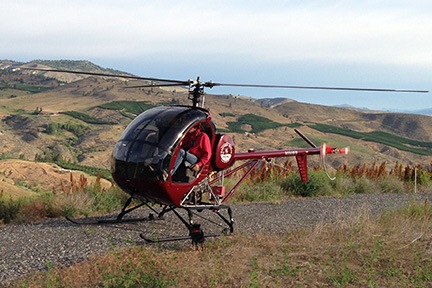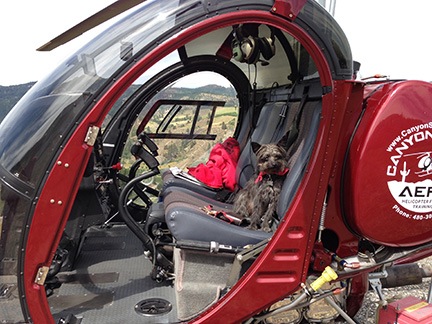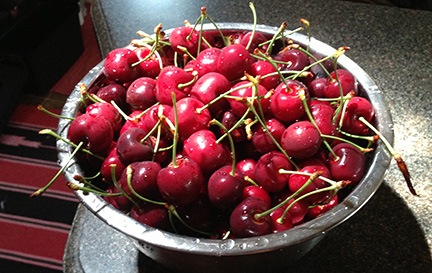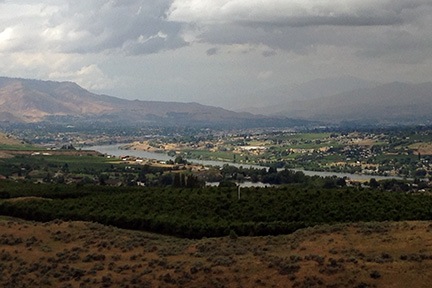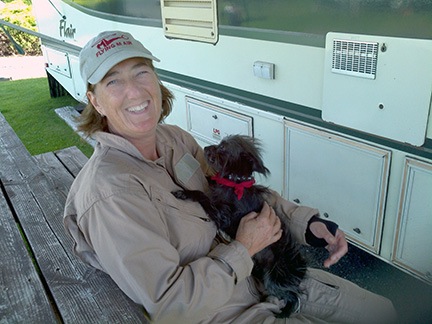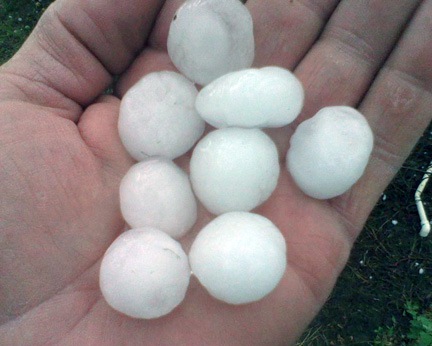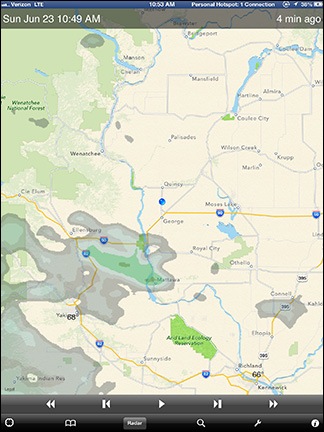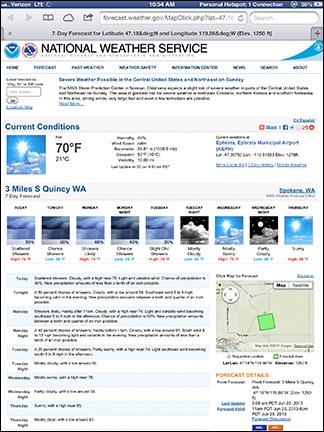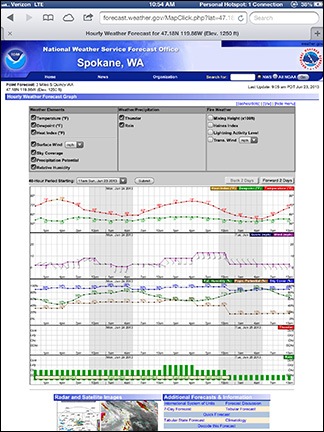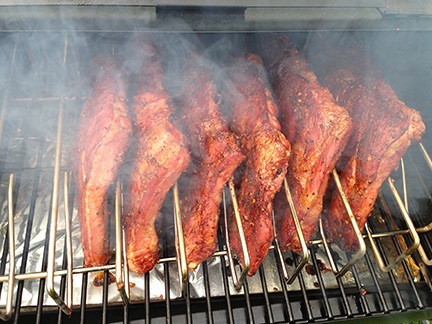The whole season in summary.
I’m just finished up my sixth season as a cherry drying pilot in North Central Washington’s Wenatchee area. I thought I’d take a moment to summarize how things went.
What Cherry Drying is All About
I’ve blogged about this extensively and you can quickly zip to other cherry drying related posts by following the cherry drying tag. In a nutshell, it’s like this:
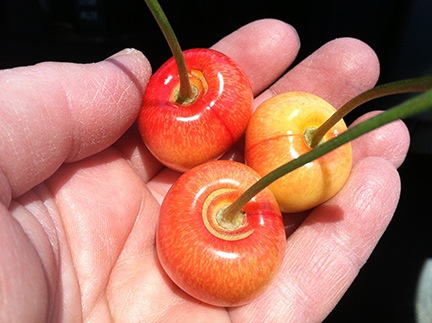
These Rainier cherries are split and cannot be sold. Cherry drying by helicopter can prevent this.
During the last three or so weeks before a cherry is harvested it is susceptible to damage by rain. Growers are most worried by splits, which can occur when water accumulates in the cherry’s stem cup and is absorbed through the skin. The cherries get too fat for their own skin and split. Other damage can include mildew and rotting.
Because of this, growers want to get the cherries as dry as possible after a rain. So they hire helicopter pilots to hover over the cherry trees after it rains. The downwash of the helicopter’s main rotor blades shakes the water off the leaves and cherries, allowing them to dry much quicker without absorbing so much water.
Keeping the cherries dry is vitally important for a successful crop — as this year so clearly demonstrated. During the relatively short cherry season, dozens of helicopters are on standby with pilots waiting to fly when it rains. And when the rains start falling, all hell breaks loose over the cherry trees.
The Flying M Air Team
One of the things I pride myself on is the ability to provide prompt service and quick dry times to my clients. I do this by never contracting to cover more than 100 acres per helicopter and by utilizing helicopters well-suited to cherry drying missions. Because of this 100 acres/helicopter policy, I need to contract with additional helicopter crews to help out during “crunch times.”
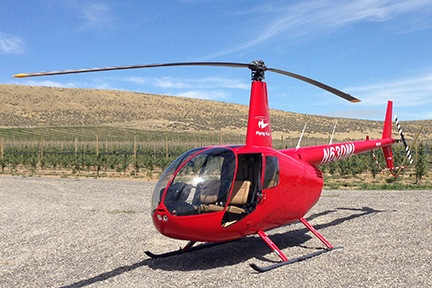
I’ve been providing cherry drying services in my Robinson R44 since 2008.
My Robinson R44 can thoroughly dry an average of 40 acres per hour. (Of course, actual drying capacity varies depending on tree size, row density, orchard obstacles and terrain, and the wetness of the trees. The more I dry, the better feel I have developed for all this.) That means that if it rained on all my clients at once and they all called at the same time, I could dry 100 acres in about 2-1/2 hours. That’s a long time, but still within requirements. Fortunately, it seldom rains everywhere at once and I’ve never had all my clients call at once.
Of course, I do contract for more than 100 acres at a time. That means I need help to get the jobs done promptly. This was the second year in a row that I had two other helicopter crews helping me complete my cherry drying contracts.
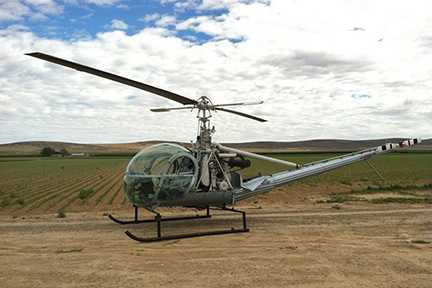
The MTAS Hiller was on contract with Flying M Air for its second year.
Mike and Ron manned the MTAS Hiller for the second year in a row. For the first four weeks of their contract with me, they covered three orchards in Quincy, WA. For the fifth and final week, they provided backup coverage for orchards in East Wenatchee and Wenatchee Heights.
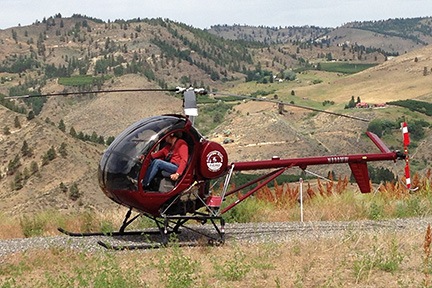
Woody at the controls of Canyon State’s Hughes 300.
Woody manned the Canyon State Hughes 300 for the first time. He was on contract with me for just 8 days during what I think of as a “super crunch” time when overlapping contracts made me responsible for about 250 acres of cherry trees. Although I prefer working with helicopters that have big two-bladed systems — such as the Robinson R44, Hiller, Bell 47, and JetRanger — this little Hughes got the job done using the Flying M Air technique of flying very low and very slow over the treetops. If Woody does come back next year, however, he’ll likely return in either a Hiller or R44.
If you’re a helicopter owner/operator with an R44 and at least 500 hours experience in helicopters (50 or more of which is in your R44), you might want to check the Help Wanted page at Flying M Air next spring. I’m always looking for good, reliable pilots with helicopters to help out.
Old Clients, New Orchards
This year, I contracted with all of last year’s clients except one. He decided to skip helicopter services. That was a loss of 55 acres. (Not sure how he did because I didn’t ask.)
Two of my clients added orchards to their contracts. One added three orchards totaling 61 acres. Another added one orchard that was 23 acres.
So I had a net gain of 31 acres. If I hadn’t lost that 55 acres, I would have had to hire on another helicopter without enough standby pay to cover it, so it’s kind of good that I lost it.
My contracted orchards stretched from George, WA to Monitor, WA. Most were in Quincy, Wenatchee Heights, and Malaga. The crunch time fell from June 20 through July 24, with super crunch falling in the middle of July.
I was based at Quincy for the first half of my season and then moved to Wenatchee Heights for the second half.
Busy, Busy!
This was our busiest season ever. My teammates and I flew a total of about 62 hours for the total of 16 weeks we were contracted (10 for me, 5 for MTAS, and 1 for Canyon State).
Now if you do the math, you’ll find that 62 ÷ 16 comes out to just about 3.9 hours per week. That’s not very much flying. But still, it was the most we’ve flown in a cherry season. My first two years I flew only 5 hours in 7 weeks (less than 1 hour per week average) and 5 hours in 10 weeks (about 1/2 hour per week average). There’s not a lot of flying in cherry drying work. It’s definitely not a time-building job.
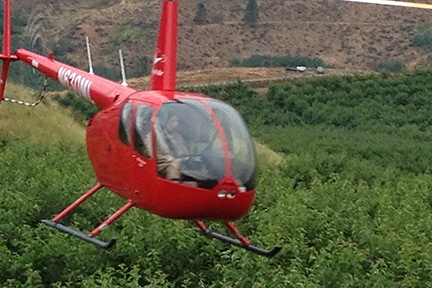
Here I am in action, hovering with my skids nearly in the trees.
The busiest time was what I refer to as the week from hell. It was the last week in June and I personally flew almost 30 hours in just 6 days. On several of those days I dried more than one orchard three or four times. I flew orchard after orchard, sometimes stopping only long enough to refuel and head back out.
I wasn’t happy about it.
Yes, I like to fly because I make money doing it. But no, I don’t like my clients to be put through the wringer by the weather, worrying and spending money on my services and still losing cherries because there’s simply no way to keep them dry when it rains all day long. So yes, I hope I never have another cherry season as busy as this one. My clients, for the most part, are too nice.
As for my competition, they were flying around like crazy people, too. I heard them all on the radio, playing follow the leader to guide unprepared pilots to the orchard blocks that needed drying. Some operators will contract for blocks as small as 2 and 3 acres, so their pilots often spend more time flying from orchard to orchard — without compensation — than actually drying. I’d rather take contracts for a small handful of big orchard blocks so I spend more time over the trees than in transit.
Early, Compressed Season
This was also the earliest season ever. My first contract started May 29; it usually starts the end of the first week in June. And my last contract ended by August 10; last year, it ran until August 25.
It was also a compressed season. Estimated start dates for mid to late season orchards, which were provided at the beginning of the season, creeped forward little by little, causing an uncomfortable overlap in scheduling — which is why I brought Woody’s company on board. That explains how my season started a week earlier than usual and ended two weeks earlier.
Late Season Rain
We also had an unusual amount of late season rain. Indeed, many growers don’t bother getting helicopter standby coverage because it so seldom rains in late July and August. But this year it did. Huge rainstorms hit on the evening of August 1, the morning of August 2, and the evening of August 4. I made five flights, covering my contracted orchard five times and another orchard three times (at my client’s request).
It was a good thing I did. My client reported that on the day of the last storm, I was one of only two helicopters flying in the area. While the packing plant reported minimal splits for his cherries, other orchards that did not have helicopter hover service reported up to 50% splits.
Maybe some lessons were learned? I guess we’ll see next year.
That’s It In a Nutshell
That’s pretty much how the season went for me.
It was my best season ever — but will it be as good next year? Or will we have a bad crop and lose contracts due to frost — as was the case in 2008? Or not have many rain events — as was the case in 2008 through 2010? Or will some upstart company come in and undercut operators like me by taking contracts for as many as 300 acres per helicopter at half the standby pay, crossing their fingers that it doesn’t rain and they’re not actually called to dry? That’s happened more than a few times in the past and those fly-by-night operators never seem to come back for a second season.
It’s all a gamble, a crap shoot. It’s why I don’t put all my eggs in one basket, why I save as much as I can for leaner days when the revenue just isn’t flowing.
But that’s just part of being a small helicopter operator. I love the challenge — especially when things work out just right.

